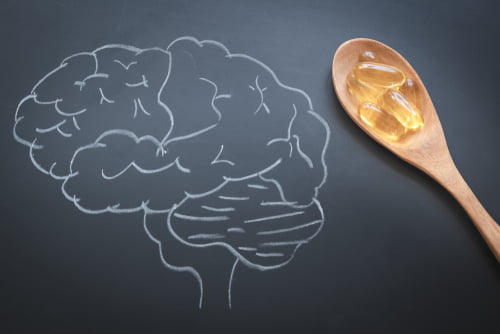The adult brain weighs a little over three pounds and, by composition, is astonishingly fatty—about sixty percent. Not all fats are created equal, though. Among the few that literally become part of brain tissue are the marine omega-3s, DHA (docosahexaenoic acid) and EPA (eicosapentaenoic acid), supplied mainly by oily fish and concentrated fish-, krill-, or algae-based supplements. These long-chain fats help build neural membranes and influence how efficiently brain cells communicate, a role that becomes even more relevant with age.
How the Brain Secures Its Omega-3s
DHA is the brain’s favored omega-3. Relative to other organs, it accumulates in strikingly high amounts, forming a sizeable fraction of the gray matter that houses most neuronal cell bodies. The prevailing view is that the brain maintains these levels by pulling DHA from circulating blood lipids that cross the blood–brain barrier; the brain’s own ability to manufacture DHA from shorter fats appears limited compared with other tissues.
EPA tells a different story. It enters the brain at rates similar to DHA, yet its steady-state level is far lower. One explanation is rapid β-oxidation—EPA is quickly broken down for energy after it arrives—leaving less to be incorporated into membranes. Differences in how the body handles, transports, and embeds these fatty acids in tissues further shape how much ultimately reaches the brain.
Aging, Cognition, and the Case for Omega-3s
Cognitive performance typically peaks in midlife and gradually declines thereafter. With advancing age, the brain loses volume and weight, oxidative stress ramps up, and membrane lipids shift—changes that intersect with the biology of dementia, including Alzheimer’s disease.
Observational and mechanistic studies repeatedly point to omega-3s as meaningful players in this landscape. In a well-known community cohort, people with the highest blood DHA had markedly lower risks of Alzheimer’s and all-cause dementia than those with the lowest levels. Experimental work complements these findings: enriching neural tissues with omega-3s can dampen neuroinflammation and oxidative damage, raise brain-derived neurotrophic factor (BDNF), and protect synapses—pathways that plausibly translate to better resilience against amyloid-related injury. Imaging studies add another layer, linking higher dietary DHA and EPA intakes with larger hippocampal volumes, a brain region central to memory.
The Omega-3 Index: A Number That Tracks with Brain Health
Because diet questionnaires are imperfect, researchers increasingly rely on objective biomarkers. The Omega-3 Index—your red blood cell percentage of EPA plus DHA—captures long-term intake and tissue status. Supplementation trials show a clear dose–response: higher daily doses of EPA+DHA steadily nudge the Index upward over months.
Large, aging cohorts suggest this number carries clinical meaning. In postmenopausal women followed for about a decade, those with higher baseline Omega-3 Index values experienced slower cognitive decline and a lower absolute risk of developing dementia. In a subset who underwent MRI, higher Index readings aligned with greater total brain volume. Separately, frequent consumption of omega-3-rich fish has been associated with fewer silent vascular brain abnormalities on imaging, supporting a vascular contribution to the benefits.
Turning the Marker into a Plan
Measuring your Omega-3 Index provides a concrete starting point. If it’s low, you can move it: emphasize oily fish such as salmon, sardines, trout, or anchovies, and consider a high-quality DHA/EPA supplement, including algae-derived options if you prefer a non-fish source. Over weeks to months, these changes raise the Index and, by extension, the omega-3 content of cell membranes throughout the body—including the brain. Retesting periodically lets you confirm that your habits are delivering the status associated with better long-term outcomes.




